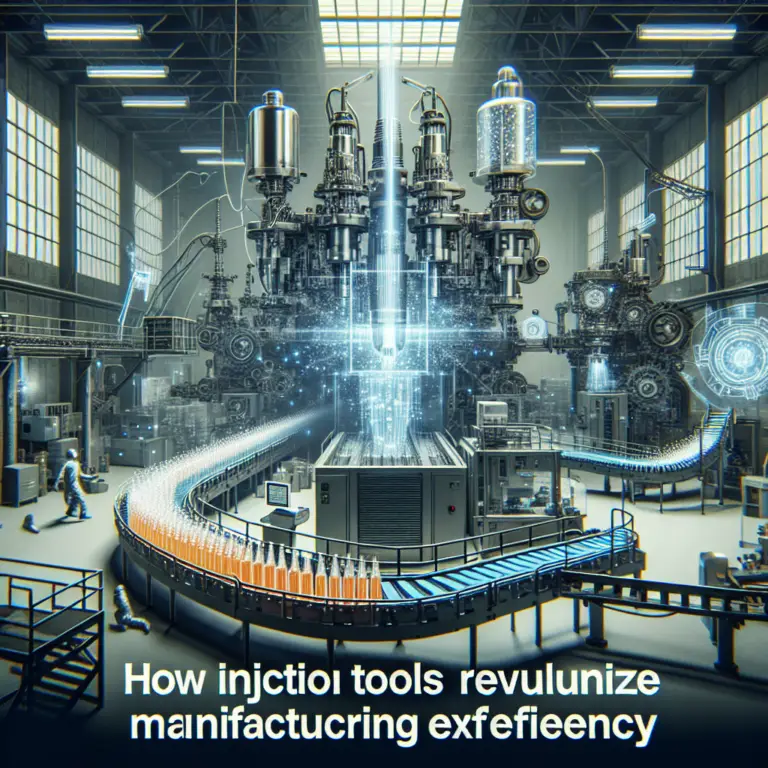How Injection Tools Revolutionize Manufacturing Efficiency
In the modern manufacturing landscape, where precision, speed, and cost-effectiveness are paramount, injection tools have emerged as key players in revolutionizing production processes. The evolution of injection molding technology has transformed how manufacturers create goods, allowing for increased efficiency, enhanced product quality, and reduced waste. This article explores the mechanisms by which injection tools have reshaped manufacturing efficiency across various industries.
Understanding Injection Molding
Injection molding is a manufacturing process used to produce parts by injecting molten material into a mold. While initially popularized in plastic production, advancements in injection technology have expanded its application to various materials, including metals, glass, and even ceramics. This versatility allows manufacturers to achieve complex geometries and intricate designs with relative ease, catering to diverse sectors ranging from automotive and aerospace to consumer products and medical devices.
Key Benefits of Injection Tools
-
Accelerated Production Rates:
One of the most significant advantages of injection molding is its ability to produce large quantities of parts in a relatively short timeframe. The continuous cycle of injecting material, cooling, and ejection means that thousands of identical components can be manufactured in a matter of hours. This speed not only meets consumer demand but also improves the overall efficiency of the manufacturing line. -
Cost Efficiency:
Injection tools can be cost-effective in the long run, especially when producing high volumes. Although the initial investment in molds and machinery can be substantial, the cost-per-unit decreases significantly as production scales up. Additionally, the durability of injection molds—often lasting for millions of cycles—reduces the need for frequent replacements, further lowering production costs. -
Consistent Quality and Precision:
The accuracy of injection molding is unparalleled; the controlled environment ensures that each part produced meets the specified tolerances. This consistency minimizes defects and reduces the likelihood of costly rework, directly impacting the bottom line. Manufacturers can rely on injection tools to maintain high quality across production batches, an essential factor in industries where precision is crucial, such as aerospace and healthcare. -
Material Versatility:
Injection tools are not limited to traditional thermoplastics. Innovations in material technology have allowed manufacturers to explore a wide range of composites and engineered resins, expanding the functional capabilities of molded parts. This versatility means that manufacturers can choose the most suitable materials for specific applications, thereby enhancing product performance and longevity. -
Reduced Waste:
As sustainability gains prominence in manufacturing, injection molding stands out for its ability to minimize material waste. The process typically generates less scrap compared to traditional manufacturing methods, and advances in recycling technology enable the reuse of scrap material. Furthermore, precise material control reduces overuse, contributing to more sustainable practices. - Automation and Smart Manufacturing:
The integration of automation and Industry 4.0 technologies with injection molding processes has taken manufacturing efficiency to new heights. Smart molds equipped with sensors can provide real-time data on the production process, allowing manufacturers to monitor quality and make adjustments promptly. Automated systems streamline operations, reduce labor costs, and optimize supply chain management.
Industry Applications
Injection tools have found applications across numerous industries, each benefiting from the efficiencies offered by this technology:
-
Automotive Industry: Injection molding is instrumental in producing components such as dashboards, bumpers, and interior trims. The process allows for lightweight, durable parts that meet stringent safety and performance standards.
-
Medical Devices: Precision is critical in the medical field, and injection molding allows for the manufacture of complex devices with high tolerances. It is used to create everything from syringes to intricate surgical instruments.
- Consumer Goods: Everyday items such as toys, packaging, and household appliances often rely on injection molding. The ability to produce aesthetically pleasing and functional designs at scale satisfies consumer demands effectively.
Conclusion
Injection tools have undeniably revolutionized manufacturing efficiency by enhancing production speed, reducing costs, ensuring quality, and promoting sustainability. As technology continues to evolve, its role in manufacturing is set to expand further, bringing new innovations and possibilities. For industries looking to streamline operations and meet the challenges of a competitive market, investing in advanced injection molding technologies is not just a trend but a strategic imperative that ensures long-term success.


